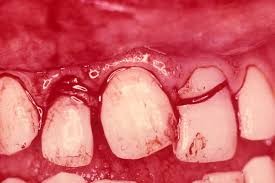Crown-Root Fracture in Children
When treating a tooth with complicated crown-root fracture, it should be noted that each case has unique challenges and accordingly requires different treatment plan. Dentists currently adopt multidisciplinary approaches for treating fractured teeth, including orthodontics, endodontics and restoratives.
Orthodontic extrusion can be used as an alternative to other removal appliances, provided that the tooth demonstrates signs of vitality and thus can be saved. Conservative treatment (i.e., saving a tooth rather than extracting it in trauma cases) depends on a number of factors related to the tooth itself, the patient and the parents. For example, in a growing child missing a tooth could have significant effect on the child’s quality of life, bringing about some strong, prolonged impact on the patient’s emotions and social interaction.

Let us look around literature to see what possible treatment options are given for managing teeth with complicated crown-root fracture. One option is to remove the fractured crown fragment and to restore the tooth, provided that the fracture line has not reached the biological width. Another option is to remove crown fragment and to expose the fracture line with gingivectomy to establish biologic width before restoring the tooth. A third option is to remove the crown fragment, do root canal treatment and finally restore the tooth with post-core supported crown. A clinician can also remove the crown fragment, do root canal treatment followed by orthodontic or surgical extrusion and then restore the tooth with post crown. In severe cases, the tooth must be extracted and replaced with prosthesis.
This is still governed by the restorability of the remaining tooth structure; that is, it must be questioned whether a tooth needs root canal treatment and how to save the tooth from contamination form the subgingival tissue. Nevertheless, a clinician has to assess how to bring the tooth margin to a gingival level in order to build up an aesthetic restoration with good coronal seal and self-cleansing margins.
Root canal treatment in crown-root fractured teeth is considered difficult due to the associated bleeding and crevicular fluid contamination from gingiva that happens after removing crown fragment. However, a clinician might consider gluing the coronal portion if possible and doing the root canal treatment through it to avoid excessive bleeding. An apexification material such as root repair calcium silicate-based cement can be used as intracanal medication to promote root completion as it possesses high biocompatibility as well as antibacterial and osteogenic properties.
Orthodontic extrusion can be done with sectional fixed orthodontic technique with 4 brackets and short NiTi (0.014 × 0.025) rectangular wire with easy access, easy cleaning and less potential to develop supracrestal fibrotomy.

